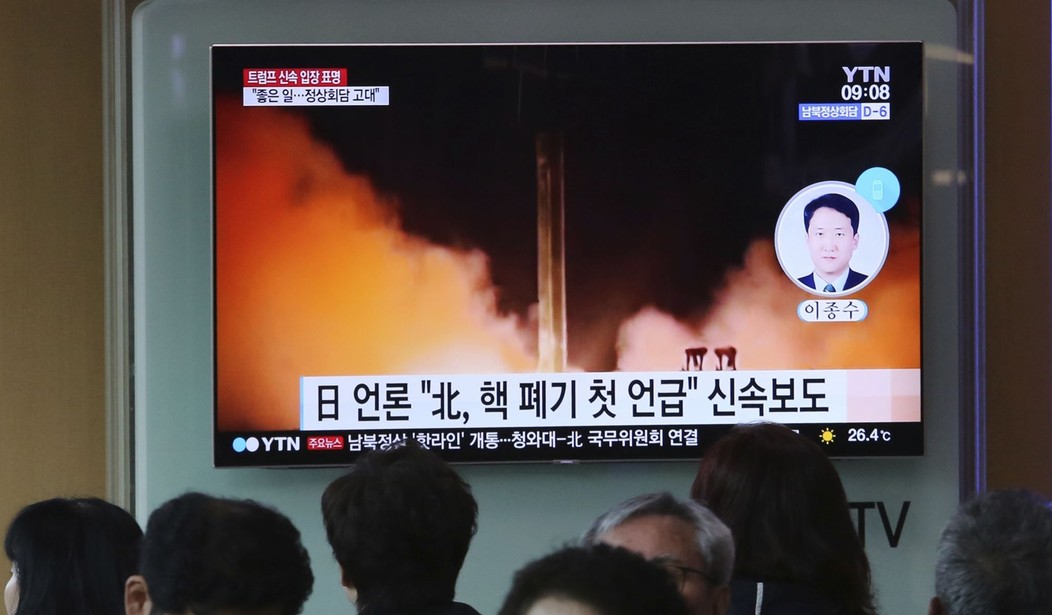Just before 2:30 p.m. Pacific Time on Monday, North Korea tested a hypersonic maneuvering reentry vehicle (MaRV) near western Japan. At about the same time, the Federal Aviation Administration (FAA) issued a peculiar “ground stop order” to aircraft operating across the western United States and Hawaii.
FAA statement on West Coast ground stop for some airports: pic.twitter.com/LwkseEMWFC
— The FAA ✈️ (@FAANews) January 11, 2022
The agency says the ground stop order was unrelated to the missile test. But aviation reporter Tyler Rogoway writing in The War Zone says that the ground stop order was no mystery to pilots in the air at the time. They knew that the launch of the North Korean hypersonic missile was the proximate cause of the FAA order, which was probably issued after the Strategic Air Command’s NORAD “advised of a missile-launched aerial maneuvering vehicle from North Korea” being in the air.
Now, The War Zone has become aware of messaging to air traffic control personnel at the time of the order that stated NORAD advised of a missile-launched aerial maneuvering vehicle from North Korea impacting airspace from the Aleutian Islands to Los Angeles. A ground stop was subsequently issued for air traffic control centers ZAN (Anchorage), ZSE (Seattle), ZOA (Oakland), and ZLA (Los Angeles) —and possibly others — no later than 2:32 PM PST. In fact, ZLA may have received the order a few minutes earlier.
Just 16 minutes later, NORAD advised that the ballistic missile’s aerial maneuvering vehicle payload had splashed down in waters far to the east of Japan and that normal operation could proceed, effectively ending the ground stop. In reality, the vehicle actually splashed down in the waters to the west of Japan.
How seriously did the military take this missile launch? Minutes prior to the FAA order, NORAD had actually notified the Los Angeles Air Traffic Control Center to clear traffic around Vandenberg Air Force base, where Ground-Based Midcourse Defense (GMD) interceptors, capable of knocking down ICBMs, are based.
So, it seems clear that the FAA did indeed think — or at least had enough information to err on the side of caution — that a major threat was posed by the North Korean launch and acted to mitigate potential danger to aircraft and possibly to keep them from interfering with a possible intercept attempt. What we don’t know is exactly what the intelligence they were given was and what processes were used to execute the actions that were put into play. NORAD saying it had no part in the ground stop could still be true if all it did was provide preliminary intelligence according to established procedures and the FAA interpreted it in their own way to order the unprecedented action.
If we have interceptors to shoot down an ICBM, why worry? Because these MARVs are nearly impossible to track and could easily evade any efforts to shoot the independently targeted warheads down.
Related: North Korea’s Kim Slams U.S. as ‘Hostile,’ Vows to Build ‘Invincible’ Military
Unlike ballistic missiles, which travel in a largely predictable parabola, making them vulnerable to interception, hypersonic weapons can traverse laterally, close to the earth’s surface and hit a target in a much shorter flight time.
In addition, hypersonic weapons can also achieve more than five times the speed of sound – or about 6,200km/h (3,850mph). All these features make them harder to track and intercept.
According to the BBC’s Security Correspondent Frank Gardner, these hypersonic missiles are also worrying as they also leave nations guessing whether they are carrying a conventional high explosive warhead or a nuclear one.
It appears that Russia, China, and North Korea may have stolen a march on the U.S when it comes to hypersonic missile technology. We’ll catch up eventually, but it’s unsettling to realize we’re barely in the game when it comes to this technology.










Join the conversation as a VIP Member